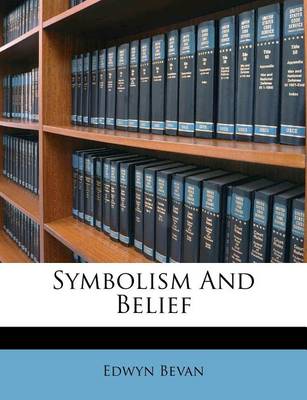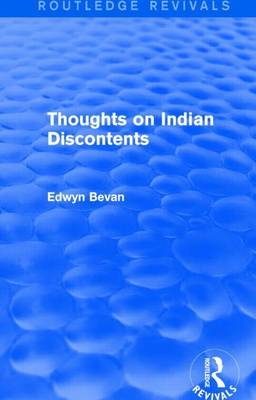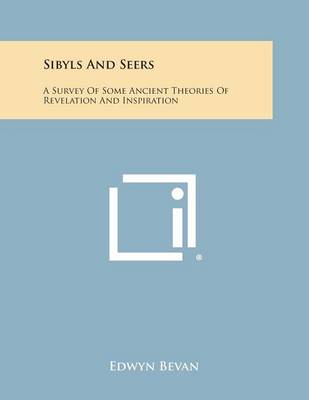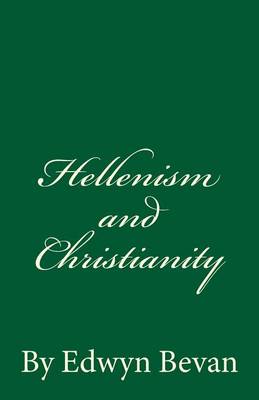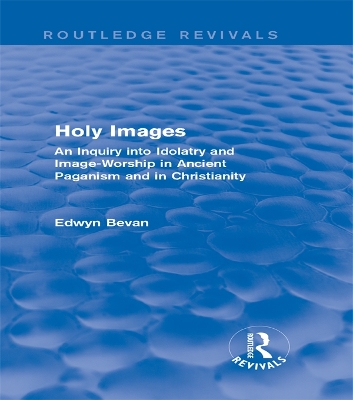Routledge Revivals
5 total works
First published in 1938, this title presents the greater part of the 1933 Gifford Lectures in natural theology, given by Edwyn Bevan. The questions raised regarding the element of symbolism in religious conceptions takes the reader to the very heart of the religious problem, and addresses some of the most fundamental questions posed by theology and comparative religion: the nature of 'Spirit'; the spiritual efficacy of sacred histories and the images they utilise, in particular those found in the Bible; the ambiguous role of language, not only in relation to God but also to the world around us; and the uncertainties pertaining to 'rationalism' and 'mysticism'.
Symbolism and Belief offers the student of theology, philosophy, scriptural exegesis and anthropology a wide-ranging resource for the study of religious discourse.
First published in 1929, this title presents some reflections from one of the leading cultural commenters of his day, Edwyn Bevan, on the notoriously controversial subject of burgeoning Indian Nationalism during the twilight of the British Empire.
Bevan's analysis of the peculiarities, tensions and divisive issues of the Indian situation as it existed at the end of the 1920s is of particular relevance today, as historians attempt to develop a nuanced and, as far as possible, objective account of the differing mentalities that proved so volatile. The argument proceeds with reference to a range of seemingly disparate topics: the difference between forward- and backward-looking nationalism, the physical well-being of the average Indian, and religious ethos, to name only three. This fascinating reissue will prove valuable to students of Indian and colonial history, British foreign policy and the politics of nationalism.
The ancient world as a whole believed in the existence of a world of spirits beyond, or alongside, the visible, tangible world. They believed also that communications between these two worlds frequently took place: everywhere we find diviners and prophets, oracles and visionaries.
First published in 1928, Sibyls and Seers investigates the various aspects of this 'superstition' in the Ancient Near East, in Homer, the Greek tragedians, and the myriad religions of the Roman Empire. The theophanies of Yahweh in the Old Testament - Enoch, Jeremiah, Ezekiel - are given some attention, as is the tradition in Christian theology and literature: St Paul, Pope Gregory the Great, Dionysius the Areopagite, and the Scholastics. These lectures are clearly written, broad in scope and full of insight for contemporary students of religion, theology and anthropology.
First published in 1921, this title examines the relationship between what the author labels the 'rationalist' element in Western culture on the one hand, derived from the ancient Greeks, and Christianity, on the other. Bevan contends that these two traditions are distinct, but not mutually exclusive, and that to understand fully their mutuality and reciprocity it is necessary to examine the distinct history of both: their individual provenances, their fusion and interpenetration, and also, their future together.
The first chapter attempts to indicate the significance of Hellenic culture in its relation to Eastern civilisation. The extinction of Paganism at the time of Augustine is examined, as is a selection of moral issues associated with the Christian life, as that is interpreted by the author. Finally, the notion of 'progress' is investigated with specific reference to the position of Christianity in the modern world.
First published in 1940, this title presents four of the Gifford Lectures in natural theology given by Edwyn Bevan in 1933: 'An Inquiry into Idolatry and Image-Worship in Ancient Paganism and Christianity'. Reference is made throughout all four lectures not only to the conventional disputes in Western Christianity, but also to the attitudes of Hebrew, Pagan, Patristic, Muslim and Eastern thinkers towards the role of symbols and symbolism in worship. In this way, a subject of perennial fascination and importance is placed in a broad historical context, and innovative lines of enquiry are developed with clarity and insight.
Holy Images offers an intriguing and easily accessible resource to students of theology, comparative religion, religious anthropology and philosophy.
